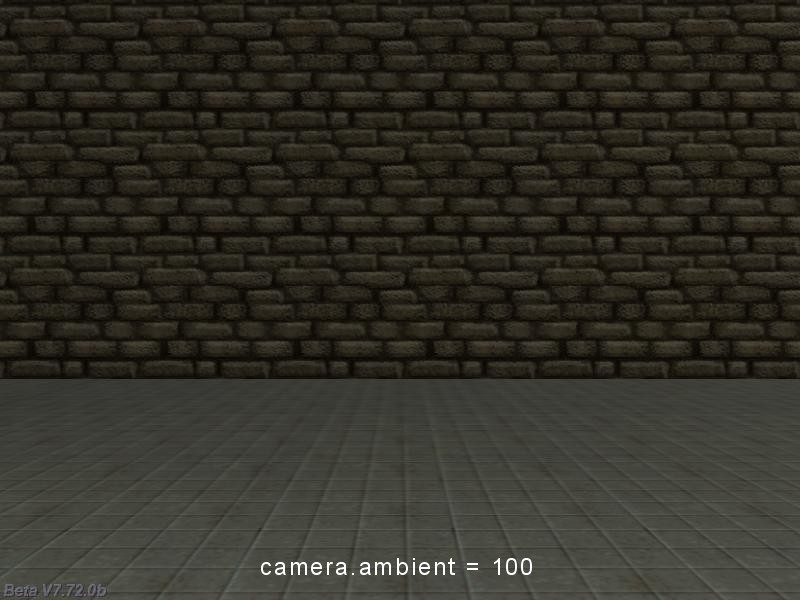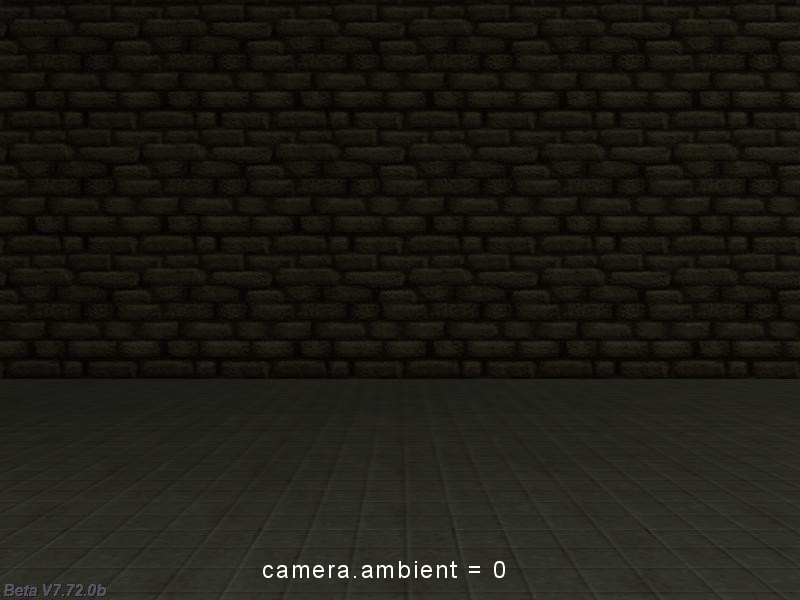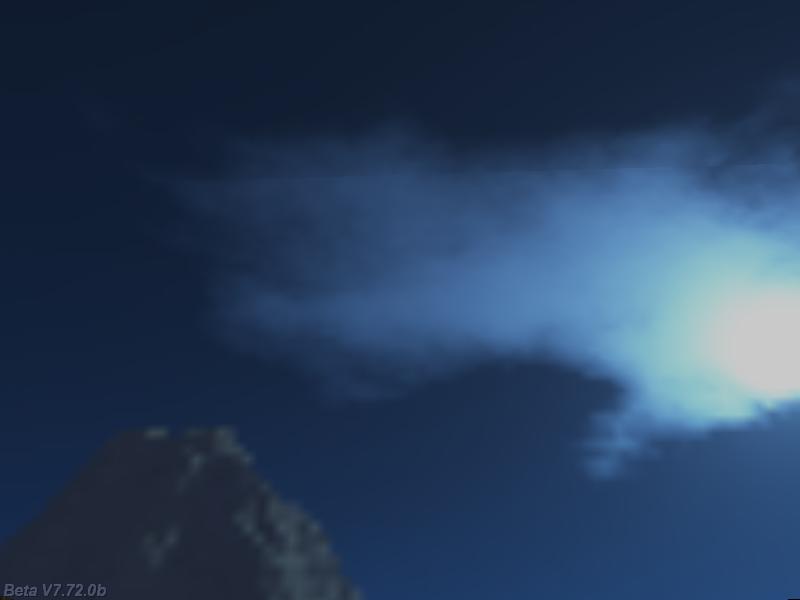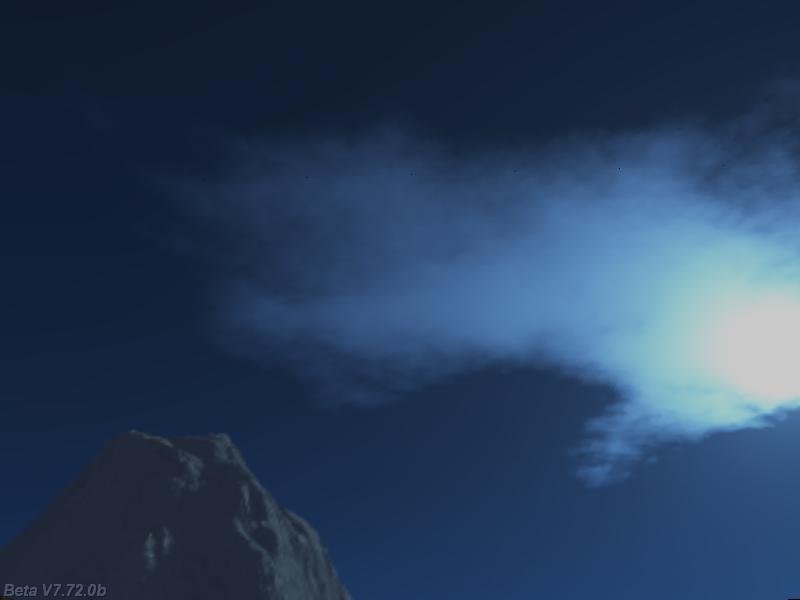Q: I want to create a crosshair who will rotate the camera and also move around the center of the screen as I move the mouse around.
A: Simply set mouse_mode to 1 to get the desired result; here's an example.
BMAP* pointer_tga = "pointer.tga";
action players_code() // attach this action to your player
{
var movement_speed = 10; // movement speed
VECTOR temp;
player = my; // I'm the player
set (my, INVISIBLE); // 1st person player
while (1)
{
my.pan -= 7 * mouse_force.x * time_step;
camera.x = my.x;
camera.y = my.y;
camera.z = my.z + 50 + 1.1 * sin(my.skill44); // play with 50 and 1.1
camera.pan = my.pan;
camera.tilt += 5 * mouse_force.y * time_step;
vec_set (temp.x, my.x); // trace 10,000 quants below the player
temp.z -= 10000;
temp.z = -c_trace (my.x, temp.x, IGNORE_ME | IGNORE_PASSABLE | USE_BOX) + 15; // play with 15
temp.x = movement_speed * (key_w - key_s) * time_step;
temp.y = movement_speed * (key_a - key_d) * 0.6 * time_step;
c_move (my, temp.x, nullvector, IGNORE_PASSABLE | GLIDE);
wait (1);
}
}
function mouse_startup()
{
mouse_mode = 1;
mouse_map = pointer_tga;
while (1)
{
vec_set(mouse_pos, mouse_cursor);
wait(1);
}
}
Q: Assuming you had a wmb file (a simple level) with lights in it, is it possible to programmatically change the light in the level in order to make it darker or dimmer?
A: Use camera.ambient to achieve what you need; here's a snippet that changes the ambient light in a loop.
function lights_startup()
{
fps_max = 100;
while (1)
{
// camera.ambient will range from 0 to 100
camera.ambient = 50 + 50 * sin(3 * total_ticks); // 3 gives the speed
wait (1);
}
}


Q: I want my character to play its "attack" animation whenever I press the left mouse button. How can I play the entire "attack" animation by clicking my left mouse button only once?
A: Use this example as a base for your code.
action player1()
{
VECTOR temp;
var camera_distance = 200;
player = my; // I'm the player
while (1)
{
// player's pan is controlled by the mouse and the "A" and "D" keys
player.pan -= 10 * mouse_force.x * time_step - 1.5 * (key_a - key_d);
camera.x = player.x - camera_distance * cos(player.pan); // keep the camera behind the player
camera.y = player.y - camera_distance * sin(player.pan); // at the distance given by camera_distance
camera.z = player.z + 100; // and 100 quants above the player
camera.pan = player.pan; // the camera has the same pan angle with the player
camera.tilt += 7 * mouse_force.y * time_step; // and can tilt freely
if (!mouse_left) // the left mouse button wasn't pressed? Then take care of the regular animations (stand, walk)
{
if (key_w + key_s > 0) // if the player is walking
{
ent_animate(my, "walk", my.skill46, ANM_CYCLE); // play its "walk" frames animation
// the animation speed increases when the player presses the "shift" key
my.skill46 += 5 * (1 + key_shift * 0.7) * time_step;
my.skill46 %= 100; // loop the animation
}
else // if the player is standing
{
ent_animate(my, "stand", my.skill48, ANM_CYCLE); // play the "stand" frames animation
my.skill48 += 2 * time_step; // "stand" animation speed
my.skill48 %= 100; // loop the animation
}
}
else // the left mouse button was pressed here
{
my.skill40 = 0;
while (my.skill40 < 100) // play the "attack" animation until its end
{
ent_animate(my, "attack", my.skill40, NULL); // play the "attack" animation only once
my.skill40 += 2 * time_step; // "attack" animation speed
wait (1);
}
}
vec_set (temp, my.x); // trace 10,000 quants below the player
temp.z -= 10000;
// and adjust its height accordingly, placing its feet on the ground
temp.z = - c_trace (my.x, temp, IGNORE_ME | IGNORE_PASSABLE | USE_BOX) + 15; // play with 15
// move the player using the "W" and "S" keys; the speed increases to 200% if the player presses the "shift" key
temp.x = 10 * (key_w - key_s) * (1 + 1 * key_shift) * time_step;
temp.y = 0;
my.skill47 += c_move (my, temp, nullvector, IGNORE_PASSABLE);
wait (1);
}
}
Q: What is the key mapping for double click? Is there any key mapping for this?
A: There isn't any key mapping for double click; however, you can track double clicks like this:
#define click_rate 0.7 // register a double click if the player presses the left mouse button twice in less than 0.7 seconds
STRING* result_str = "#10";
TEXT* messages_txt =
{
pos_x = 200;
pos_y = 20;
string(result_str);
flags = SHOW;
}
function track_clicks_startup()
{
var time_passed;
var doubleclick_on = 0;
while (1)
{
if (mouse_left) // the left mouse button was clicked at least once?
{
while (mouse_left) {wait (1);} // wait until the player releases the mouse button
time_passed = 0;
while (time_passed < click_rate)
{
if (mouse_left)
{
str_cpy (result_str, "Double click!");
doubleclick_on = 1;
// do what you want with the double clicks here
}
time_passed += time_step / 16;
wait (1);
}
if (doubleclick_on == 0)
{
str_cpy (result_str, "Single click!");
// do what you want with the single clicks here
time_passed = 0;
while (time_passed < 0.5) // display the "Single click!" message for 0.5 seconds
{
time_passed += time_step / 16;
wait (1);
}
}
}
else // the left mouse button wasn't clicked at all here
{
doubleclick_on = 0;
str_cpy (result_str, "No mouse clicks!");
}
wait (1);
}
}
Q: Imagine a plane flying towards a destination that is out of view; I need a needle to point towards the destination. Can you help?
A: Use the code below.
ENTITY* plane_target;
action my_target()
{
plane_target = my;
}
function my_arrow()
{
set (my, PASSABLE);
my.ambient = 100;
VECTOR arrow_coords;
VECTOR temp;
while (1)
{
// place the arrow at these xyz coordinates in relation to the player
vec_set(arrow_coords.x, vector(300, -100, 0));
vec_rotate(arrow_coords.x, player.pan);
vec_add(arrow_coords, player.x);
vec_set(my.x, arrow_coords.x);
vec_set(temp, plane_target.x);
vec_sub(temp, my.x);
vec_to_angle(my.pan, temp);
// my.tilt = 0; // remove the comment if you want to keep the arrow movement in plain 2D
wait (1);
}
}
action my_plane() // just a poor sample
{
VECTOR temp;
player = my;
while (!plane_target) {wait (1);}
ent_create ("arrow.mdl", nullvector, my_arrow);
while (1)
{
my.pan -= 7 * mouse_force.x * time_step;
camera.x = my.x;
camera.y = my.y;
camera.z = my.z;
camera.pan = my.pan;
camera.tilt += 5 * mouse_force.y * time_step;
temp.x = 10 * (key_w - key_s) * time_step;
temp.y = 5 * (key_a - key_d) * 0.6 * time_step;
temp.z = 0;
c_move (my, temp.x, nullvector, IGNORE_PASSABLE | GLIDE);
wait (1);
}
}
Q: Is there a way to scale my sky box texture (skybox+6.tga) so it doesn't get so stretched when it is created?
A: The solution is simple: use a texture with a big resolution. Compare the shots below; the first one uses a 768 x 128 pixels bitmap, while the second one uses a 3072 x 512 pixels bitmap.


Q: Is it possible to have collision detection between a hmp terrain and snow particles?
A: The big difference between sprites and particles is speed; this is achieved by ignoring the collision detection for the particles. Nevertheless, you can fake the collisions in a convincing way by playing with the lifespan for your particles, making sure that they die right after they penetrate the terrain.
BMAP* snow_tga = "snow.tga";
function snow_effect(PARTICLE *p)
{
p->vel_x = 1 - random(2);
p->vel_y = 1 - random(2);
p->vel_z = -5 + random(3);
p.lifespan = 70; // this value sets the lifespan for your particles - play with it
p.alpha = 40 + random(50);
p.bmap = snow_tga;
p.size = 3;
p.flags |= (BRIGHT | MOVE);
p.event = NULL;
}
action snow_generator() // place a model above the terrain and attach it this action
{
VECTOR temp;
set (my, INVISIBLE | PASSABLE);
while (1)
{
temp.x = my.x + 1000 - random(2000); // generate snow particles in a range of -1000...+1000 quants
temp.y = my.y + 1000 - random(2000); // around the object on the x and y axis
temp.z = my.z;
effect(snow_effect, 1, temp.x, nullvector);
temp.x = my.x + 1000 - random(2000);
temp.y = my.y + 1000 - random(2000);
temp.z = my.z;
effect(snow_effect, 1, temp.x, nullvector);
temp.x = my.x + 1000 - random(2000);
temp.y = my.y + 1000 - random(2000);
temp.z = my.z;
effect(snow_effect, 1, temp.x, nullvector);
temp.x = my.x + 1000 - random(2000);
temp.y = my.y + 1000 - random(2000);
temp.z = my.z;
effect(snow_effect, 1, temp.x, nullvector);
temp.x = my.x + 1000 - random(2000);
temp.y = my.y + 1000 - random(2000);
temp.z = my.z;
effect(snow_effect, 1, temp.x, nullvector); // generate 5 snow particles each frame
wait (1);
}
}
Q: I want to make a particle that can rotate together with the entity that it is attached to.
A: Setting a small lifespan value for your particles will destroy them right after their creation. This way, you can achieve what you want by simply generating a new particle each frame.
BMAP* effect_tga = "snow.tga";
function my_effect(PARTICLE *p)
{
p.lifespan = 1; // kill the particle right after its creation
p.alpha = 50;
p.bmap = effect_tga;
p.size = 5;
p.flags |= (BRIGHT | MOVE);
p.event = NULL;
}
action rotating_object() // just an example
{
VECTOR temp;
while (1)
{
my.pan += 3 * time_step;
my.tilt += 4 * time_step;
my.roll += 2 * time_step;
vec_for_vertex(temp, my, 10); // generate particles from the 10th vertex of the entity
effect(my_effect, 1, temp.x, nullvector);
wait (1);
}
}
Q: I have a entity that walks onto a path but I want him to move off that path when the player comes into his scan zone.
A: Use the code below.
var entity_speed = 3;
var movement_enabled = 0;
var dist_to_node;
var current_node = 1;
var angle_difference = 0;
VECTOR temp_angle;
VECTOR pos_node; // stores the position of the node
function move_target()
{
while(1)
{
if(movement_enabled)
{
entity_speed = minv(5, entity_speed + 0.5 * time_step);
ent_animate(my, "walk", my.skill46, ANM_CYCLE); // play its "walk" frames animation
my.skill46 += 5 * time_step;
my.skill46 %= 100; // loop the animation
c_move(my, vector(entity_speed * time_step, 0, 0), nullvector, IGNORE_PASSABLE | GLIDE);
vec_to_angle (my.pan, vec_diff (temp_angle, pos_node, my.x));
}
wait(1);
}
}
action my_enemy() // attach this action to your enemy model
{
VECTOR temp;
while (!player) {wait (1);}
move_target();
result = path_scan(me, my.x, my.pan, vector(90, 80, 400)); // scan the area looking for the player
if (result) {movement_enabled = 1;}
path_getnode (my, 1, pos_node, NULL);
vec_to_angle (my.pan, vec_diff (temp_angle, pos_node, my.x)); // rotate towards the node
while(1)
{
if ((c_scan(my.x, my.pan, vector(180, 90, 1000), IGNORE_ME) > 0) && (you == player)) // detected the player?
break; // then get out of this loop!
dist_to_node = vec_dist(my.x, pos_node);
if(dist_to_node < 50) // close to the node?
{
current_node = path_nextnode(my, current_node, 1);
if (!current_node) {current_node = 1;} // reached the end of the path? Then start over!
path_getnode (my, current_node, pos_node, NULL);
}
wait(1);
}
// the enemy has spotted the player here
while (1) // so it rotates towards it and starts chasing it
{
vec_set(temp, player.x);
vec_sub(temp, my.x);
vec_to_angle(my.pan, temp);
my.tilt = 0;
wait (1);
}
}
Q: I'm not sure what about the numerical scancode values that are returned on my PC. How can I check the values for my joystick?
A: Here's a simple project that returns the values for the keys, mouse buttons, joysticks, etc.
void main()
{
video_screen = 1; // start in full screen mode
level_load (test_wmb);
fps_max = 70;
video_mode = 7; // run in 800x600 pixels
video_depth = 32; // 32 bit mode
while (1)
{
while (!key_any) {wait (1);} // wait until a key is pressed
while (key_any) {wait (1);} // wait until a key is released
wait (1);
}
}
PANEL* scancodes_pan =
{
digits = 30, 50, 5, *, 1, key_lastpressed; // display the scan code for the last key that was pressed
flags = SHOW;
}